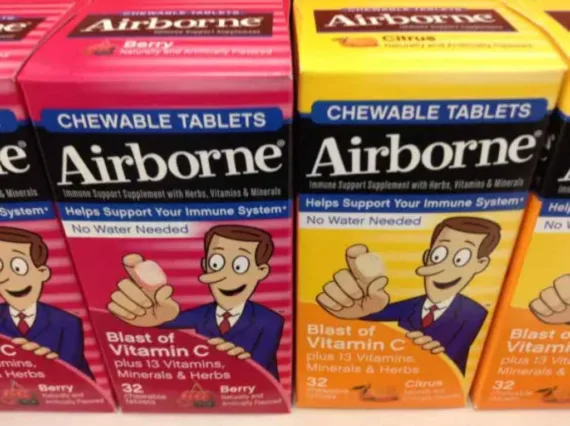 We are all aware that too much sodium in our diet can lead to high blood pressure, which greatly increases the risk of having a stroke, cardiovascular disease, or kidney disease.
We are all aware that too much sodium in our diet can lead to high blood pressure, which greatly increases the risk of having a stroke, cardiovascular disease, or kidney disease.
Studies have also shown that, over the long term, a higher consumption of salt is associated with more cases of stomach cancer and could even lead to osteoporosis.
But salt is difficult to avoid — especially since manufacturers add it to most foods in the form of sodium chloride in order to “improve” the taste.
Good news: Just by modifying your eating habits a little bit, you can drastically reduce your salt intake!
Here’s how…
How Much Salt Is Too Much?
The current sodium recommendation for healthy adults is 2,400 milligrams per day (about 1 teaspoon).
Some advisory groups want to reduce this to 1,500 milligrams of sodium a day.
To give you a better idea of how much is too much, it’s important to realize that sodium chloride (or table salt) is approximately 40% sodium.
Here’s how much sodium is in salt:
- 1/4 teaspoon salt = 600 mg sodium
- 1/2 teaspoon salt = 1,200 mg sodium
- 3/4 teaspoon salt = 1,800 mg sodium
- 1 teaspoon salt = 2,300 mg sodium
You may be wondering about low-sodium food options that are available these days.
Here’s what the food labels mean:
Sodium free = Less than 5 milligrams sodium per serving
Very low sodium = 35 milligrams or less sodium per serving
Low sodium = 140 milligrams or less sodium per serving
Reduced or less sodium = At least 25% less sodium as compared with a standard serving size of the traditional food
Light in sodium = 50% less sodium as compared with a standard serving size of the traditional food (restricted to foods with more than 40 calories per serving or more that 3 grams fat per serving)
Salt free = Less than 5 milligrams sodium per serving
Low sodium meal = 140 milligrams or less sodium per 100 grams
Unsalted or no added = No salt added during processing; does not necessarily mean sodium free though
In the end, it’s up to you to monitor how much salt you consume on a daily basis and the steps you take to reduce your sodium intake.
How To Reduce Salt Intake
#1 Eat more fresh food and less processed food.
Prepared foods and processed foods are the main sources of sodium in our diets. Fresh and raw ingredients (especially those that are “in season“) have more natural flavor, so you don’t need to add salt in order to make them taste good. Foods that are high in sodium — such as white bread, processed cheese, ham, and spaghetti with sauce — should only be bought occasionally. If you do buy these foods, choose the brand with the lowest sodium content.
#2 Start slow, rather than dramatically cutting salt from your diet.
It’s difficult to avoid salt entirely, but if you gradually reduce your sodium intake, then you will slowly get used to the taste of food with less added salt. Try combining a regular version of a product with a reduced sodium version. That way, when you eventually switch to buying just low-sodium versions of foods, you won’t even notice the difference!
#3 Commit to smaller portions.
It sounds obvious, but simply eating smaller portions of food will dramatically reduce the amount of salt in your diet. this is something you can do when you’re preparing your own food at home, as well as when you’re eating out. Generally, the more calories a meal has, the more sodium it has. If you have smaller plates in your cupboards, try eating from the smaller plates for a change. For example, you’ll save on both calories and sodium just by switching from 12-inch plates to 10-inch plates. That alone will reduce the amount of food you eat by at least 20% (…as long as you don’t keep refilling your plate).
#4 Instead of seasoning your food with salt, use other seasonings instead.
Instead of adding salt to enhance the flavor of your food, try using other seasonings like black pepper, chili, cinnamon, dried and fresh herbs, ginger, garlic, and lemon juice — to name just a few. Experiment until you find the flavors you like best. There are lots of other alternatives to salt that you can buy as well. (Mrs. Dash is one example.) In addition, using more healthy fats (like those found in avocados and extra virgin olive oil) can also compensate for any flavor loss due to less salt.
#5 Eat out less. It’s easier to control the amount of sodium you consume that way.
Have you ever looked at the sodium content in restaurant foods? It’s shocking! Some fast food meals contain 5,000 milligrams of sodium or more! That’s more than double a day’s recommended sodium intake. If you do eat out, try to make it a special treat. Before dining out at a restaurant, check the restaurant’s website for sodium information, or ask your server which meals contain less salt.
#6 Change the way you cook.
A simple way to increase the natural flavor of certain foods is to sear or sauté the food in a pan. In addition, roasting also increases the natural sweetness of vegetables and can greatly improve the taste of chicken and fish.
#7 Eat less bread.
Even whole grain bread (which has far more nutrients than white bread) contains a lot of sodium. The next time you want a healthy lunch, try a salad instead of a sandwich. Search online for some interesting and healthy low-sodium salads. As a rule, the more you cut bread and sandwiches from your diet, the healthier you will be. Consider buying healthier wraps instead of bread for those times when you make sandwiches. Smaller whole wheat wraps are the best.
#8 Rinse canned foods.
This one is super easy to do! Rinse and drain canned foods (like beans and vegetables) before you eat them. This can significantly reduce the sodium levels, with very little loss in flavor.
#9 Break the habit. Stop adding salt.
Reaching for the salt shaker as soon as your food arrives on the table is an easy habit to get into. It’s also an easy habit to stop… if you put your mind to it. From this point forward, simply taste your food before you add any salt. The more you try to savor the natural flavor in the actual food, the more you’ll start to realize that additional salt is unnecessary. Are you feeling extra motivated to reduce sodium in your diet? Try removing the salt shaker from the table!
Until food manufacturers and restaurants are required to reduce the levels of sodium they add to food, it’s up to us to be knowledgeable about what we are eating.
With a little planning and more attention to detail, we can all make a conscious effort to reduce the amount of salt in our diets. This will lead to a healthier future for us all.
More Ways To Reduce Sodium Intake
- How To Reduce Sodium Without Sacrificing Taste
- 4 Ways To Lower Sodium When Eating Fast Food
- Tips For Making Healthier Fast Food Choices
- 10 Easy Ways To Reduce Sodium
Professionally, I pursued my Masters Degree in Family Therapy at Texas Tech — where I obtained invaluable expertise and experience helping people with a wide variety of physical and emotional health issues. Personally, I think it's useful when people realize that they're not the only one going through a difficult time. So any time that I think my personal health experiences would be helpful to someone else going through the same thing, I will share my story here. With health issues that I've personally experienced (like Endometriosis, Lyme Disease, Hysterectomy, Skin Cancer, Ganglion Cysts, Autism, and other topics that very few people enjoy talking about) and health products that I've found beneficial (like sleep aids, essential oils, and medications)… I do my best to provide my own raw and honest firsthand experiences that I think others would appreciate hearing about and (hopefully) find helpful. I'm grateful that I have a number of friends who have also been willing to share their very personal stories here — regarding their own physical and emotional health. When I'm not writing about health topics, you will find me sharing Good News & Fun Times as publisher of The Fun Times Guide (32 fun & helpful websites).









